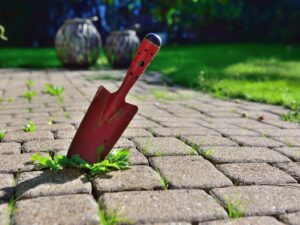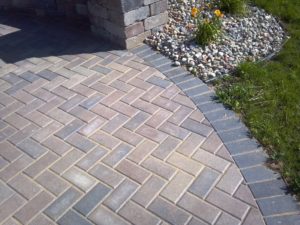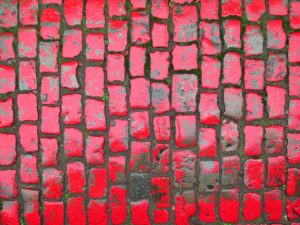Undertaking a paver project can transform your outdoor spaces, creating beautiful walkways, patios, or driveways. One crucial element in a successful paver installation is the correct amount of sand. A good paver sand calculator ensures proper leveling, stability, and longevity of your project.
In this comprehensive guide, we will walk you through the step-by-step process of determining the optimal amount of sand required for your paver project, taking into account various factors that influence the calculation.
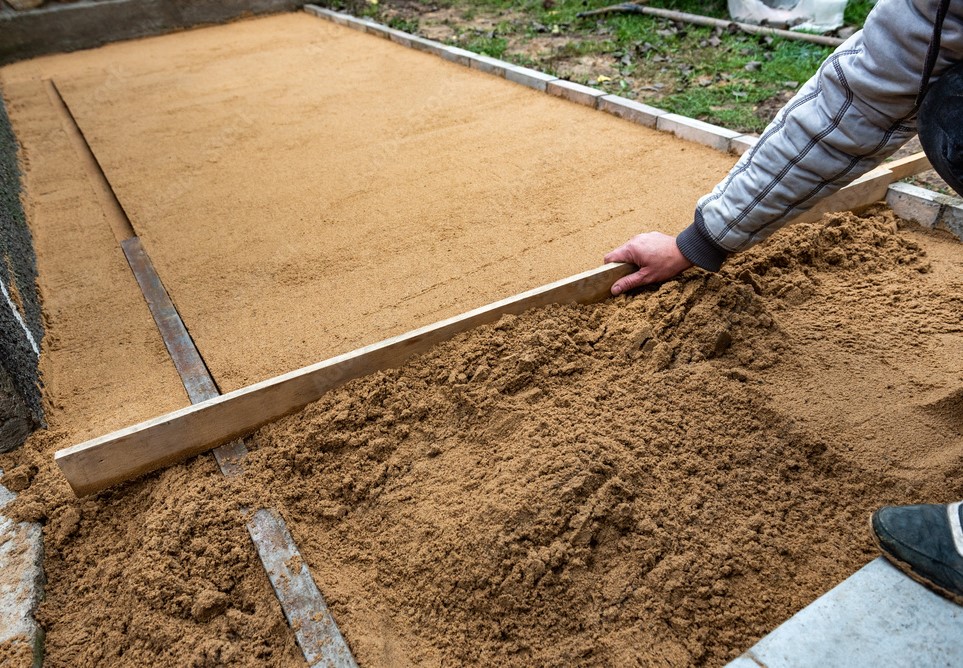
Paver sand calculator in 6 steps
To teach how to perfectly calculate the right amount of sand for your project, we are going to break down the process into 6 steps:
- Measuring the area
- Determining the depth
- Converting to cubic yards
- Adjusting for compaction and waste
- Choosing the right sand
- Final calculation and ordering
So let’s talk about each one of those steps separately and in detail.
Measuring the area
Measuring the area accurately is a crucial step when calculating the amount of sand required for a project, particularly when installing pavers.
Before beginning the measurement process, ensure you have a measuring tape or a laser measuring device. These tools will help you obtain accurate measurements of length and width.
Identify the main section of the project area and measure its length and width using the measuring tape. It’s important to measure in feet, as this is the standard unit for construction and landscaping projects in the US.
Once you have measured the length and width, multiply these two measurements together to calculate the total square footage of the main area.
For example, if the length is 10 feet and the width is 15 feet, the total square footage would be 150 square feet (10 ft x 15 ft = 150 sq ft).
If the project area has irregular shapes or contains separate sections, it’s best to divide it into smaller, more manageable sections. Measure each section separately, following the same process of recording the length and width.
Proceed to calculate the square footage of each section separately by multiplying its length and width, just like previously explained. After that, add all those areas together, and you should have the total area of your project.
Determining the depth
Different types of pavers may have specific requirements for the sand bed depth. But, typically, for most residential paver projects, a sand bed depth of 1 inch to 1.5 inches is suitable.
Some pavers, such as interlocking concrete pavers, typically require a shallower sand bed depth compared to natural stone pavers. It’s essential to consult the manufacturer’s guidelines or specifications for the recommended sand bed depth specific to the paver type you are using.
The desired final height of your paved surface is another factor to consider when determining the sand depth. If you are installing pavers next to existing structures or surfaces, such as a patio or driveway, you’ll need to ensure that the height of the pavers aligns with the surrounding areas.
Additionally, if your project area has a slope or needs to accommodate proper water drainage, you may need to adjust the sand depth accordingly to achieve a level surface.
The intended use of the paved area is an important consideration when determining the sand depth. Areas that will experience heavy foot traffic, such as walkways or driveways, may require a thicker sand bed to provide adequate support and prevent shifting or settling of the pavers.
The climate and soil conditions in your area can also influence the sand depth. In regions with freeze-thaw cycles, a deeper sand bed may be required to provide stability and prevent pavers from shifting during temperature fluctuations.
Whereas areas with unstable or sandy soils may require additional measures, such as adding a geotextile fabric or compacting the base, to ensure proper support for the pavers.
If you’re unsure about the appropriate sand depth for your specific project, it’s advisable to consult with a professional in the hardscape industry. They can assess the specific factors related to your project, consider local building codes and regulations, and provide expert guidance on determining the optimal sand depth.
Converting to cubic yards
With all the measurements done, it’s time to accurately calculate the amount of sand required for your project and convert it to cubic yards.
Use the measurements obtained from measuring the area to calculate the total square footage of the project. Consider the factors discussed earlier, such as paver type, final height, and intended use of the area, to determine the appropriate sand depth.
Multiply the total square footage by the sand depth measured in inches. This calculation will give you the volume of sand in cubic inches.
Divide the result obtained by 324. This conversion factor accounts for the fact that there are 27 cubic feet in a cubic yard and 12 inches in a foot (12 x 12 = 144). Therefore, 27 cubic feet divided by 144 square inches equals 0.1875 cubic feet per square inch.
This result will represent the sand volume in cubic feet. To convert this to cubic yards, divide the cubic feet value by 27 (since there are 27 cubic feet in a cubic yard). This final calculation will give you the amount of sand required in cubic yards for your project.
In short, a simple formula would be:
Total sand in cubic yards = (Square footage × Sand depth in inches) / 324
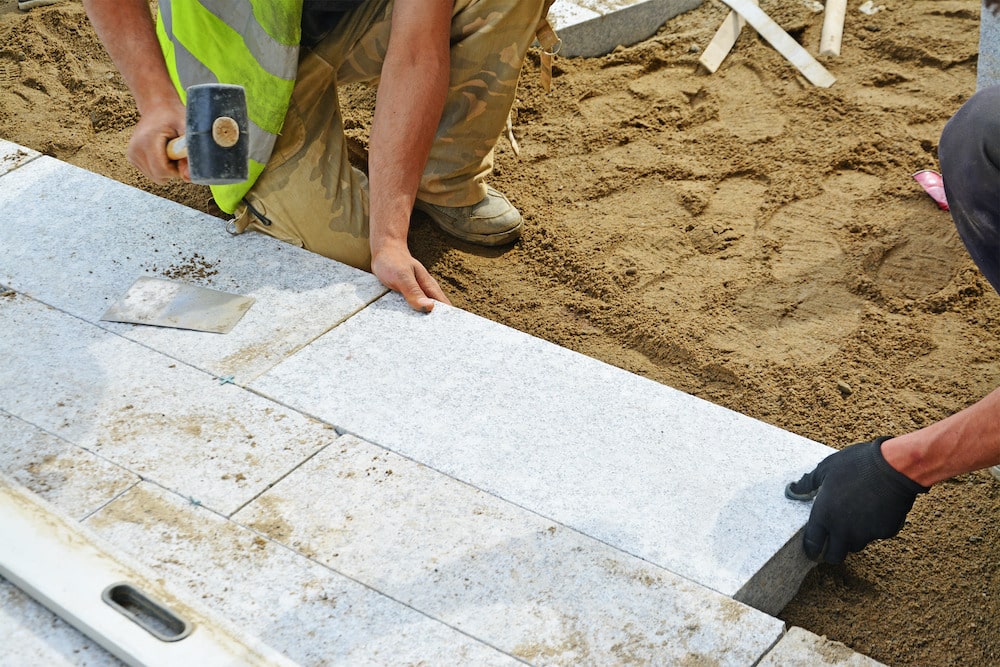
Adjusting for compaction and waste
When estimating the amount of sand required for your project, it’s important to consider adjustments for compaction and waste.
Compaction refers to the settling of sand under the weight of the pavers, which reduces its volume. Waste accounts for the sand lost during the installation process or due to irregular cuts and adjustments.
Compaction occurs when the sand settles under the weight of the pavers and other factors. On average, a compaction factor of 10-20% is typical. This means that the initial volume of sand will decrease by this percentage due to compaction.
Waste accounts for the sand lost during the installation process or due to irregular cuts, adjustments, or any other factors that result in unused or discarded sand. A waste factor of 5-10% is typically applied to account for these losses.
Multiply the initial cubic yard value calculated in Step 1 by the compaction factor and the waste factor:
Adjusted in cubic yards = Cubic yards × Compaction factor × Waste factor
It’s worth noting that the compaction and waste factors mentioned here are general guidelines. The actual factors may vary depending on the specific characteristics of your project, the type of pavers used, and other considerations.
Consulting with a professional contractor can provide further guidance on the appropriate compaction and waste factors for your specific project.
Choosing the right sand
Selecting the right type of sand is essential for ensuring the stability, functionality, and longevity of your paver project. Two common options for sand are polymeric sand and regular jointing sand.
Polymeric sand is a popular choice for paver projects due to its enhanced performance and durability. It contains additives, typically polymers, that help bind the sand particles together when activated with water.
Polymeric sand creates a strong bond when activated, which helps lock the pavers together and prevents shifting or movement over time. This enhances the overall stability of the paved surface.
Additionally, the binding properties of polymeric sand help to inhibit weed growth between the paver joints. This reduces the need for regular weed control and maintenance.
Polymeric sand is less prone to erosion caused by water or wind compared to regular jointing sand. This can help maintain the integrity of the paver installation over time.
Yet, regular jointing sand, also known as silica sand or fine sand, is a more cost-effective option compared to polymeric sand. While it lacks the binding properties of polymers, it is commonly used during the bedding layer of paver projects.
Polymeric sand should be used just for the sanding process, at the end of the installation. So, acquiring it is much simpler, as many manufacturers add the coverage area on the package of the product.
Regular joint sand is what you want to buy for the bedding, and that’s the sand for which we have been making all these calculations.
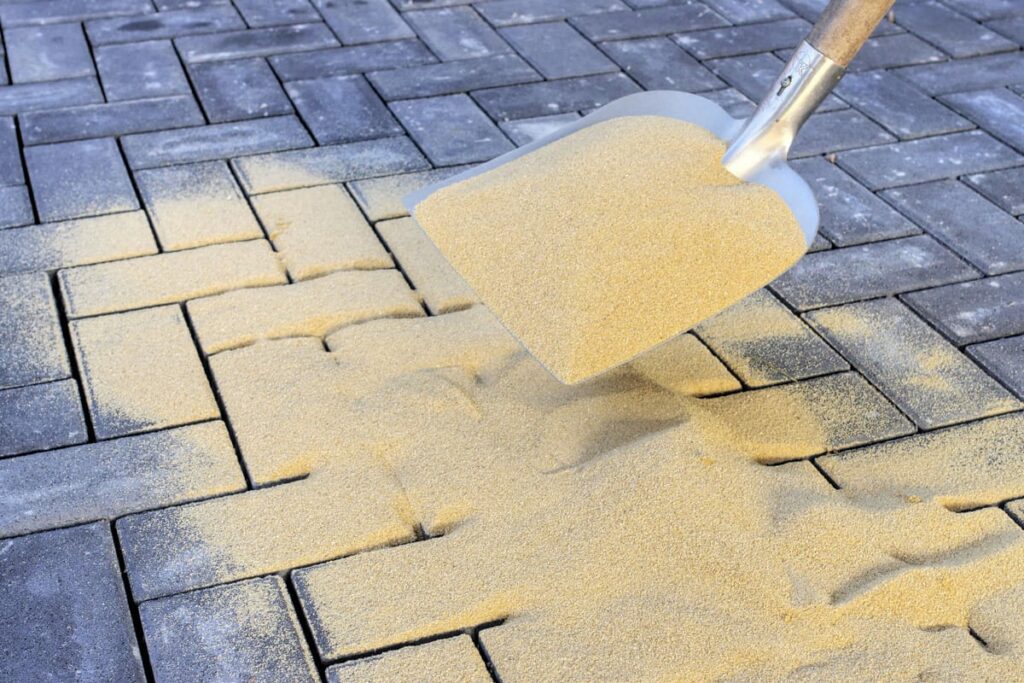
Final calculation and ordering
With all the necessary calculations completed, it’s time to make the final determination of the amount of sand needed for your project.
Round up the adjusted cubic yards to the nearest whole number and contact your local supplier or retailer to place an order. It is always advisable to order a slightly larger quantity of sand to ensure you have enough to complete the project comfortably.
Paver sand calculator: ask for professional help
As you could see, things are much more complex when they look. Knowing the right amount of sand you’ll need for your project requires a lot of calculations, and none of them are trivial ones.
Here at S&S Pavers, over our 13 years of experience in the hardscape business, we have seen many DIY installations with problems for a lack of proper measurements or attention to the crucial detail of using enough sand.
That’s why we always recommend finding a hardscape contractor in your area to help you with your project! And if you happen to be around the Sarasota and Manatee counties, in FL, we can gladly offer the help you require. Get in contact with us anytime for a consultation on our services.


